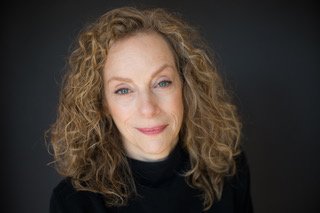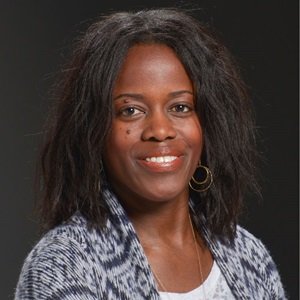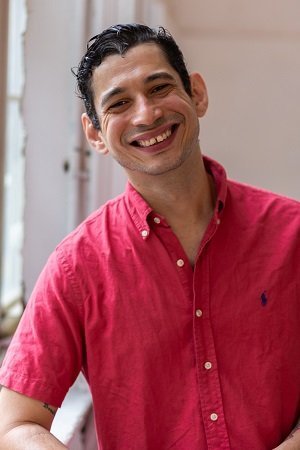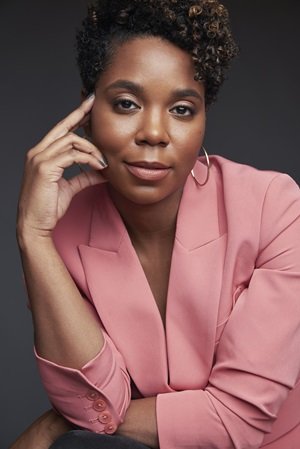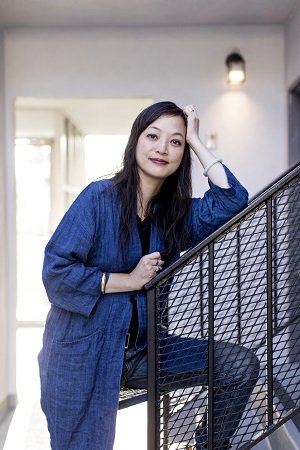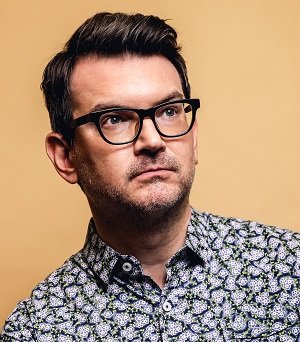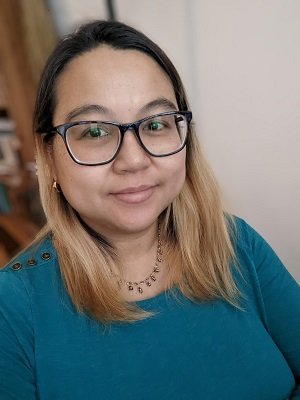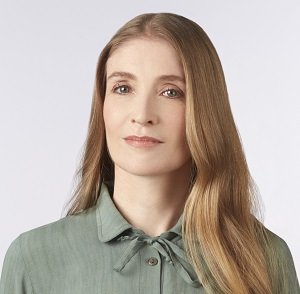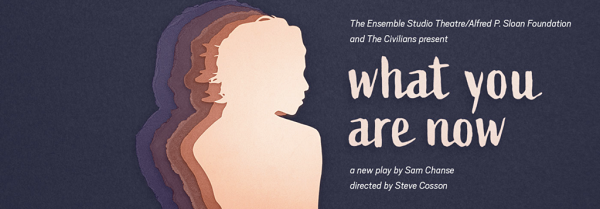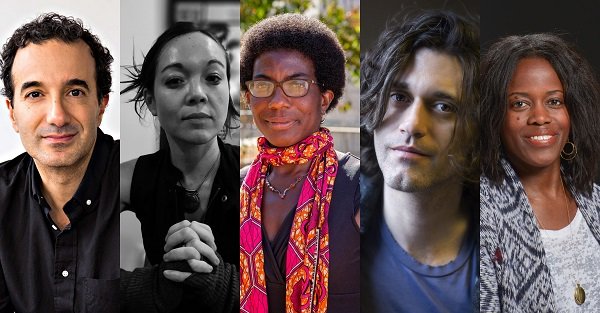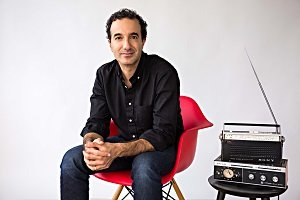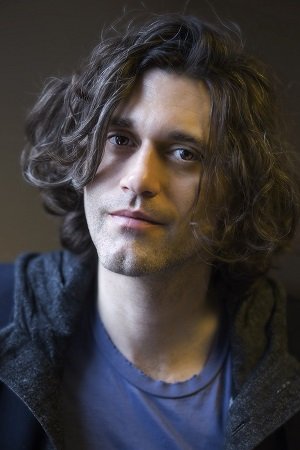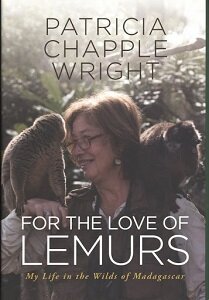How much of a game changer for women is the ability to code? What are the challenges in developing an app about women’s health? In her provocative new play DISRUPTED, Melisa Tien explores how two women join forces to create a brand-new app—one that tracks the menstrual cycle—and form a partnership that gets tested to its limits.
DISRUPTED will have its first public reading this Thursday, May 23 at 3:00 PM at the Ensemble Studio Theater as part of the 2024 EST/Sloan First Light Festival. The reading is free and reservations are encouraged.
Melisa generously found time between rewrites and rehearsals to talk to us about the play and her process.
(Interview by Rich Kelley)
How did DISRUPTED come to be?
I’ve had an interest in FemTech for a while, initially as a consumer, and then as a female freelancer participating in work environments that are traditionally male-dominated. All of this was on my mind when I proposed a narrative based on the origins of the first menstruation-tracking app for EST’s Sloan commission. The play has changed a lot since that proposal, in terms of what the crux of the conflict is, and what’s at stake. I’m exceedingly grateful to EST for being so helpful and encouraging through all the permutations.
Why this play? Why now?
I diverged from the true story of the first menstruation-tracking app in significant ways. One of them was that I changed the setting from Denmark to the U.S. I’m more familiar with the workplace culture, gender gap, and history of tech in the U.S. To me, these topics are as germane to contemporary life as they were a decade ago when the play is set. I also elected to change the ethnicity of the named characters to those of Asian descent. A decade ago, I would have considered this a sure-fire way of killing any chances of the play being produced. Today, it feels like an invitation to an ever-growing pool of actors of Asian descent, and an ever-growing audience that embraces work featuring predominantly Asian casts, to engage with thoughtful and thought-provoking storytelling.
What would you like the audience to take away from DISRUPTED?
That they’ve seen something engrossing unfold between two people, and they’re unsure whether either one was 100% in the right or 100% in the wrong. Also—how apropos it is that the context is the trial-by-fire world of tech and app development.
Do you code? Have you ever developed an app yourself?
I’ve taken a couple of free HTML coding courses through the New York Public Library’s TechConnect program. We didn’t go as far as app development; we only created very basic websites. I do have a friend who’s a musician who has successfully developed apps geared toward music-making.
Did you work with a consultant? How did that change the play?
I got the chance to speak at length with the person who coded the apps that my musician friend published. He provided a ton of insight—he assured me that the way the story plays out is believable, he offered details on what constitutes “good” and “bad” code, and he explained how databases associated with apps can often be more valuable than the users themselves, among many other things. All of this impacted what I put into, and how I told, the story.
As you present it in the play, coding seems to offer truly disruptive power. It can be a tool for good in enabling a socially enriching app or it can be a means of mischief, even destruction. Does the ability to code change the game for women who code?
Today there are organizations whose mission is to get more women (and any non-male-identifying folx, for that matter) into coding; there’s still a pretty stark gap in the industry. Because of this, if you’re a woman who can code, and code well, you stand a good chance of getting hired over a male with similar abilities. I’d add that being a coder is thought of as the lowest level of a hierarchy that places developers above coders, and software engineers above developers. Any of these levels is available to women (or anyone non-male identifying) for the taking.
How did you make the scenes Juni has with the venture capitalists so sadly, comically on the nose? Did you interview any VCs as part of your research?
As it turns out, I did not interview any VCs or angel investors, partly because I didn’t want them to feel like I was pointedly criticizing them—though I do have criticisms about their approach. Instead, I dug around and found the kinds of comments the real founder of the first menstruation-tracking app received when she went through her first round of pitching. She pitched only to men (unsurprising for the time), and though their feedback was given in good faith and intended to be helpful, it seems patently absurd from my perspective as someone who menstruates and uses a menstruation-tracking app religiously. That vast disconnect—of experience and understanding—is sad, funny, and also fascinating to me.
In your recent rewrite of DISRUPTED, you begin with Shin-Yi and Juni onstage reflecting on their journey together so that it becomes something of a “memory” play. Why make that change?
I’m interested in seeing them tell their story as a team, up to the point where the app gets massive amounts of funding and really explodes. Then I’m interested in seeing how their narratives begin to diverge. I’m intrigued by how different perspectives translate to different accounts of how an event happened, and how and why things went wrong.
What message does DISRUPTED have for those interested in launching a successful app?
Launching an app is not unlike putting a work of theater out in the world, insofar as if you have an idea, and the will to bring that idea to fruition, then you’re well on your way. Both require insane amounts of hard work to realize, but just about anyone with a good idea, tenacious will, and decent-to-exceptional ability can do it.
You’ve written as many librettos for operas—and had them produced—as you have plays. How is writing a libretto different from writing a play? Do you have a preference?
When I write a libretto, I start with a detailed outline prior to writing the first line of text. The outline indicates every plot point and every moment where one or more singers will sing a big number. After I finish a draft of a libretto, much of the revision happens within the songs; I focus on fine-tuning the lyrics. When I write a play, more likely than not, there’s no outline and I’m going on instinct, forging ahead with only a vague notion of where I’m headed. Once I’ve got a messy draft down, I’ll revise—plot, structure, characters, whatever needs revising. I like writing plays and librettos equally, as both are such different processes; they exercise different parts of my brain.
What’s next for Melisa Tien?
In June, with support from The Assembly, I’ll be showing an excerpt of a piece about autonomous driving technology and its impact on the long-haul trucking industry and long-distance truckers in particular. It will have movement and text and is based on interviews I did with truckers along Interstate-80 over the course of a cross-country research trip. Next year, I’m premiering a couple of short operas, one with Opera Theatre of Saint Louis, and one with American Opera Projects here in New York City. And somewhere in between, I’m hoping to make a short film.
DISRUPTED is one of six readings of new plays in development as part of the EST/Sloan Project in this year’s First Light Festival, which runs until June 17. All readings are free, but reservations are encouraged. The festival is made possible through the alliance between The Ensemble Studio Theatre and The Alfred P. Sloan Foundation.








